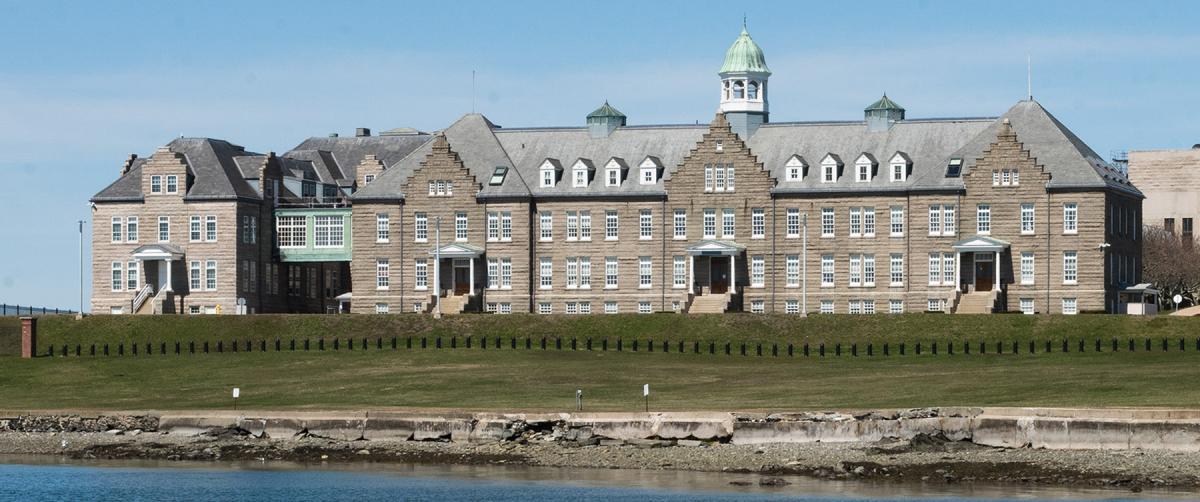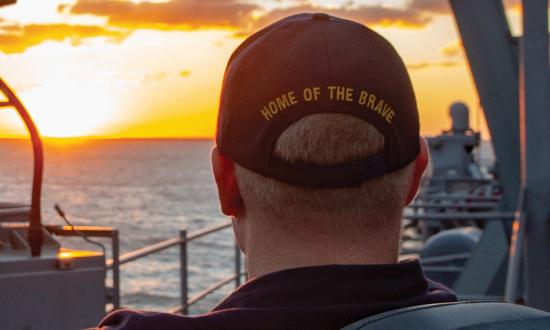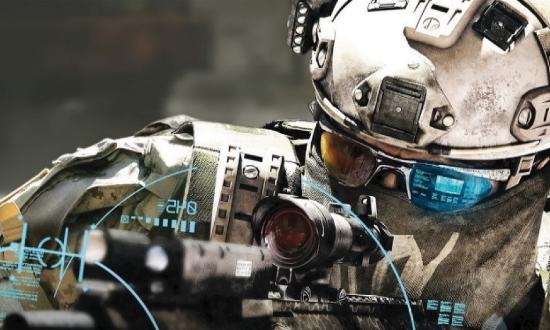To be most effective, the U.S. Navy’s culture must equally leverage three pillars: operational, technocentric, and strategy-centric influences. With these in balance, the Navy translates its assigned ends into the ways and means needed to produce and wield sea power effectively. Most notably, the interwar years (1920–1940) and the late Cold War era (1970–1989) saw sound strategy driving force structure and doctrinal decisions with extraordinary success.
Since the Cold War ended in 1991, the Navy has not sustained the cultural balance established during the interwar years and renewed in the 1970s. A The processes for sustaining American sea power focus largely on developing means (programming and budget), while devaluing ways (strategic and doctrinal underpinnings) for rationalizing and justifying those means. Recently, a congressional leader chided the Navy for its “strategic deficit.”1 Given this situation, it is worth asking whether the U.S. Navy—after three decades of relative peace and uncontested supremacy at sea—has fallen victim to the misplaced fixation on technology, inspections, and micromanagement that Andrew Gordon attributed to the Victorian-era Royal Navy: “They thought they were good, but, in ways that mattered, they were not. They thought they were ready for war, but they were not.”2
The Navy has struggled to balance its three cultural pillars and reconcile them with the mandates of jointness. Today’s Navy often places means ahead of ways in the ends-ways-means process. It clings to an unbalanced organizational culture that privileges operational priorities and technological solutions, while neglecting the strategic thinking needed to address the emerging global landscape.
Navy leaders must address this cultural imbalance immediately, as they adapt the organization and its people to face significant emerging challenges. As a first step, they must develop an appreciation for how historical and cultural influences produced the organization that exists today and how it differs from more successful past models. With this understanding, Navy leaders will better determine where lasting changes are needed, imagine what those changes should look like, and understand how to make them.
Culture and Organization
“Of all the factors involved in military effectiveness, culture is perhaps the most important.”
—Peter Mansoor and Williamson Murray3
Culture infuses all organizations, shaping the perceptions, decisions, and identities of individual members and the corporate whole. Simply stated, an organization is “a group of people who work together in an organized way for a shared purpose.”4 Organizational culture thus incorporates the values, beliefs, norms, assumptions, practices, language, and historical memory held in common by the people working within an organization.5 Organizations may explicitly express and indoctrinate some aspects of their culture (Navy and Marine Corps core values come to mind). Culture often, however, acts implicitly, unperceived and unrecognized to those within. Operating thus, the shaping forces of culture may challenge the Navy’s ability to discern them, appreciate their influence, and effect organizational change.
Entrenched organizational cultures tend to lean conservative, hesitating to adapt even when circumstances warrant reform. But to remain effective and survive in an ever-changing world, organizations—including the U.S. Navy—must adapt and evolve. Trigger events—an unexpected attack or a burst of tragic operational accidents, for example—may compel naval leaders to implement quick fixes. Lasting organizational change, however, requires visionary leaders who champion innovation and manage risk.6
Title 10, U.S. Code, assigns the Navy to prepare forces “primarily for prompt and sustained combat incident to operations at sea.”7 Itself a cultural artifact of the World War II generation, this narrow mandate belies what the U.S. Navy really does, which is to develop, manage, and exercise sea power in ways that serve national policy during peacetime and war.8
The Navy’s organizational culture can advance or hinder this fundamental purpose. Understanding and leveraging this culture is no simple task, however, as it embodies a complex blend of shifting influences: operational, technocentric, strategy-centric, and joint. By examining these influences and how they emerged and interacted through history, one may begin to see how today’s Navy can transform to better address the challenges of this century.
Operational: The Salt Horse Tradition
The maritime environment shapes the Navy’s operational culture. Whether at war or peace, naval personnel operate in a fundamentally hostile oceanic habitat, often far from home. The warship is the sailor’s abode and workplace: a complex, confining, perpetually moving place with sparse comforts. All hands share common danger: None may seek safety in a sea battle; everyone, from the captain to the junior seaman, lives or dies together. Such challenging conditions breed an ethos of practicality, distilled by Roger Barnett as “discipline, fighting spirit, and self-reliance.”9 Thus, a culture that values independence, resourcefulness, and teamwork frames how the Navy exerts sea power.
From its earliest days, the U.S. Navy nurtured a “culture of the quarterdeck,” extolling mariner-warriors such as Stephan Decatur, David Farragut, and Bull Halsey, men who epitomized nautical competence and martial virtues.10 As historian David Kohnen noted, the “salt horses” who have exemplified this tradition privilege practical experience at sea over duty ashore.11 Preferring action over intellectual pursuits, they may eschew “book learning.” “Mission” is their mantra: Salt horses dedicate themselves above all to accomplishing assigned tasking.
TechnoCentric: The Technocratic Process
Technology, engineering, and science provide the tools for sea power. Ships are machines; and technological evolution has always shaped navies. Thus, technology is a major influence on naval culture and organization. Indeed, technocentrism has a long history within the U.S. Navy.12
During the late 19th century, naval professionals embraced a new identity as rapid mechanization transformed maritime warfare. With steam, steel, and electricity supplanting wood, sail, and menial labor, many naval officers came to view themselves as engineers more than mariners.13 The advent of aviation further expanded the technology focus, just as space and cyber warfare are doing today.
World War II experience reinforced these trends. John Kuehn describes how an “OpNav culture” emerged from that conflict, “composed of problem solvers who relied on technology for solutions.”14 During the latter half of the 20th century, Admiral Hyman Rickover exercised a powerful technical influence, imprinting cultural attributes from his nuclear propulsion program on the Navy.15
Organizational arrangements reflected this technologically focused culture. At first, technocentrism resided principally in the Navy’s technical bureaus. Reporting to the Secretary of the Navy (SecNav), the bureaus—semi-independent staff agencies—managed the Navy’s “business,” superintending processes for developing and acquiring new platforms, systems, and matériel. By comparison, “military” responsibilities (command, strategy, operations, training, etc.) fell under the purview of line officers. However, after World War II the distinctions between business and military activities blurred, as OpNav increasingly shared control of bureau activities with the SecNav hierarchy.16
During the decades that followed, successive OpNav reorganizations privileged technocentric activities such as program planning, budget activities, and research and development. Tribal cultures emerged, centered narrowly on surface, submarine, and air technologies. During the 1960s, Congress abolished the bureau system and assigned the Chief of Naval Operations (CNO) to oversee the systems commands that replaced them. Concurrently, Secretary of Defense Robert McNamara introduced the Planning, Programming, and Budgeting System (PPBS), hoping to improve efficiencies across the Department of Defense.
Thus, the Navy became a technocracy—a technologically centered bureaucracy. This development cast the CNO and the OpNav staff as the Navy’s lead programmers and budgeters, incentivizing a career system that rewarded officers who acquired the technical skills needed for these roles. Unchecked by other influences, the Navy’s technocratic culture inclined (and inclines) the organization to focus narrowly on the means of sea power (platforms, systems, weapons, etc.), without fully considering the ways (strategies) guiding how those means should be employed.
Strategy-Centric: the Strategic Process
Strategy and strategic thinking form the third pillar of naval culture. Strategy-centric culture values strategic competence. It seeks to develop naval leaders with strategic knowledge, imagination, and vision by supplementing technology-related education with historical and theoretical studies.
The strategy-centric culture also fosters strategic process, a mechanism for shaping how the Navy applies sea power to realize national policy goals. Within this process, grand strategy guides technological and operational decisions. Strategy-centrism responds to the question “How should we achieve our ends,” while technocentrism inquires “What do we need to operate and fight?”
Strategy-centrism emerged from the same burst of progressive spirit that incubated U.S. Navy technocentrism during the late 19th century. As navies mechanized, perceptive observers raised questions about how such change might transform the ways navies fought. Stephen B. Luce and other reformers sparked a strategic awakening, encouraging fellow officers to reconceive maritime warfare and formalize its study. “Having a certain force at his disposal,” Luce argued in 1883, “he [the modern naval commander] should have some idea of the principles of strategy.”17
Responding to this emerging consciousness, the Navy broadened its organizational framework to promote strategic competence and processes. In 1884, Luce outflanked resistance from the Navy’s “salt horse” clique to establish the Naval War College (NWC) at Newport, Rhode Island. He envisioned the college as a place for developing strategy-minded leaders. Luce’s protégé, Alfred Thayer Mahan, advanced this vision by formulating his famous sea power theories. As the War College convened its first classes, young officers at the recently established Office of Naval Intelligence began to experiment with strategic planning. Soon planning cells appeared at the NWC and elsewhere across the Navy. These early efforts to mobilize strategic thinking contributed to the Navy’s success during the Spanish-American War of 1898.18
With Spain’s defeat, the United States emerged as a great power with an overseas empire to defend and an expanded role for its Navy. At the same time, mechanization continued to deepen the complexity of warfare. Responding to these trends, Navy Secretary John D. Long established the General Board in 1900. An advisory body charged with translating war plans into force-structure proposals, the board began to formalize a strategic process for creating sea power. In 1915, the Wilson administration further advanced the strategic process by appointing a Chief of Naval Operations to manage and exercise sea power on behalf of the SecNav. Soon the CNO and the OpNav staff would come to direct the Navy’s strategic process.
Balance Culture to Foster Effectiveness
A blend of operational, technological, and strategic influences molded the U.S. Navy’s organization during the early 20th century. Sometimes these elements balanced one another, but at times technocentrism and operational prerogatives predominated, while strategy-centrism languished. In 1911, Luce complained that “the majority of our young officers prefer the mechanical arts to the military arts.”19 World War I revealed a U.S. Navy organized to build a fleet “second to none” but unprepared to exercise it in the conflict and the uncertain strategic landscape emerging from it.
Consequently, the Navy remade itself. William S. Sims, Henry T. Mayo, and other visionaries shaped an organization that optimized strategic, technological, and operational cultures. A 1920 study authored by Captain Dudley Knox, Captain Ernest J. King, and Commander William S. Pye (protégées of Sims and Mayo) provided the blueprint. Advocating career-long education that emphasized literacy in warfighting, strategy, and matériel, the Knox-King-Pye report sought to balance the Navy’s professional culture and prepare its leaders for the challenges ahead.
Thus, the interwar years witnessed a rise of strategic thinking and process, driven by the Navy’s best and brightest.20 With the CNO at its center, the process integrated the General Board, Naval War College, the technical bureaus, and fleet commands with OpNav’s War Plans Division. Working together, these agencies endlessly devised and revised strategic concepts, most notably War Plan Orange.21 In turn, the strategies guided research and development, acquisition decisions, professional education, war gaming, and fleet exercises in a continual feedback loop of experimentation and refinement. As Trent Hone has argued, this balanced process stimulated new doctrines for exercising sea power and an adaptive learning culture.22 Blending all elements of naval culture, the interwar organization produced the adaptive strategic leadership that proved critical to Allied victory in World War II.23
After 1945, the technocentric OpNav culture predominated, disrupting the fruitful cultural fusion of the interwar years. The General Board dissolved in 1951 and the Naval War College curriculum stagnated.24 By the 1960s, technocracy ruled. As one senior staffer observed: “Practically the entire OPNAV organization is tuned, like a tuning fork, to the vibrations of the budgetary process.”25 Admiral Elmo Zumwalt, a product of the balanced cultural tradition, recognized the trend and addressed it. Concurrently, Vice Admiral Stansfield Turner, president of the Naval War College from 1972 to 1974, reinvigorated historical and strategic studies at the school.
During his tour as CNO (1970–1974), Zumwalt reshuffled the OpNav staff, making changes that elevated strategy-centric culture and established a new framework for strategic process.26 Pushing back against considerable technocratic pressure, Zumwalt’s successors and visionary Navy Secretaries sustained and augmented his organizational reforms. This sustained leadership engendered the 1986 Maritime Strategy, a strategic concept that drove Navy programming and budget priorities during the critical final years of the Cold War. The culture and organization that produced the Maritime Strategy offer a premier example of strategic process (the “ways” of sea power) effectively driving technology and force structure decisions (the “means”), as well as operations (where, when, and how the Navy operated).
Jointness: Untapped Opportunities?
Since 1945, the drive to unify the armed forces and impose on them a culture of jointness has complicated efforts to balance the Navy’s cultural pillars. Legislative action, most notably the 1947 National Security Act and the 1986 Goldwater-Nichols Act, have profoundly impacted how the Navy organizes to fulfill its sea-power role. The Navy’s operational culture contested these measures, preferring less centralized control for interservice cooperation.27 However, naval officers have always complied with the legal mandates, if at times reluctantly. But with such grudging acceptance, is the Navy missing an opportunity to rebalance its culture and improve its organization?
Scholars have noted how Goldwater-Nichols prompted a migration of strategy-minded talent from OpNav to the joint and combatant commander staffs.29 One wonders how much the Navy itself may be complicit in this exodus. Why has the Navy not produced sufficient strategic experts to meet its own needs and fulfill its joint obligations? Why does the service seemingly undervalue strategic culture and education? Why has the Navy not seized the opportunity to advance maritime strategic understanding and priorities in joint forums?
These questions require honest introspection by Navy leaders, through a lens of cultural understanding. In sum, have the predominant technocentric and operational cultures simply handed the Navy’s strategic process to the Office of the Secretary of Defense, Joint Chiefs of Staff, and combatant commanders? How should the Navy rebalance its organizational culture, restore its strategic process, and focus its organization, all within a joint construct?
Steps to Rebalance Now
These observations underscore the need for urgent action. Without delay, the Navy must rebalance its culture to address current and future challenges. For such transformations to be effective over the long haul, naval leaders—both civilian and uniformed—must fathom the service’s culture and history. Concurrently, they should begin laying the groundwork for organizational change. Specifically:
Appoint an Assistant Secretary of the Navy for Strategic Concepts
As in the 1980s, the Navy’s civilian leadership should help direct and lead organizational change. Top-level emphasis on strategic process will compel the profession to reinvigorate strategic expertise and strategy-centric culture. This new position would offer a strategy-focused counterpart to the Assistant SecNav for Research, Development, and Acquisition.
Strengthen Naval Professional Military Education
To generate the horsepower needed to effect and sustain educational reform, the Navy should elevate the presidency of the Naval War College to a three-star flag officer who has already commanded a numbered fleet. Second, under the leadership of that vice admiral, it should update the NWC curriculum to revive strategic competency and to balance naval professional military education with joint professional military education. To these ends, the Army’s approach to developing strategic leaders may offer useful lessons.29 The CNO also should appoint a 21st-century version of the Knox-King-Pye board, to review officer career education requirements, with cultural balance in mind.
Build a Cadre of Maritime Strategists
Congress should amend the Goldwater–Nichols Act to rehabilitate service-specific strategic competency—meaning maritime strategy for naval officers. The amendment should also mandate a substantial percentage of Navy O-5s and O-6s obtain a strategic planner subspecialty and serve in joint and service billets coded for this specialization. Navy leaders should also establish a career track for developing strategy-capable senior commanders similar to the Army’s Strategic Planning and Policy Program (ASP3).30 Concurrent with these measures, the legislation must loosen Defense Officer Personnel Management Act limitations on military career duration to ensure sufficient payback on education and strategic expertise.
Technology continues to shape and reshape the Navy and its culture, while the service’s operators are rewarded for hard work and mission accomplishment. Advancing operational, technocentric, and joint priorities are important, but the Navy must also restore strategic competence and realign strategic processes. By properly balancing all three legs of its cultural foundation—technological, operational, and strategic—the Navy can again become the robust, adaptive organization needed to build, maintain, and wield sea power effectively.
1. Representative Elaine Luria, “A New U.S. Maritime Strategy,” Center for International Maritime Security, 12 July 2021, cimsec.org/a-new-u-s-maritime-strategy/.
2. Andrew Gordon, The Rules of the Game: Jutland and British Naval Command (London: John Murray, 1996), 594.
3. Peter R. Mansoor and Williamson Murray, “Introduction,” in The Culture of Military Organizations, ed. Peter R. Mansoor and Williamson Murray (Cambridge, UK: Cambridge University Press, 2019), 3.
4. Cambridge Dictionary, “Organization” (Cambridge, UK: Cambridge University Press).
5. For detailed definitions of organizational culture, see Peter A. Schein and Edgar H. Schein, Organizational Culture and Leadership (New York: John Wiley & Sons, 2016), 6; and Mansoor and Murray, The Culture of Military Organizations, 1.
6. Work by Peter Mansoor and Williamson Murray informed these observations. See Mansoor and Murray, The Culture of Military Organizations, 454–55.
7. “10 USC 8062: United States Navy: Composition; Functions,” United States Code, Office of the Law Revision Counsel, U.S. House of Representatives.
8. Nicolas A. Lambert, “What Is a Navy For?” U.S. Naval Institute Proceedings 147, no. 4 (April 2021): 46, 50.
9. Roger W. Barnett, Navy Strategic Culture: Why the Navy Thinks Differently (Annapolis, MD: Naval Institute Press, 2009), ix.
10. Scott Mobley, Progressives in Navy Blue: Maritime Strategy, American Empire, and the Transformation of U.S. Naval Identity, 1873–1898 (Annapolis, MD: Naval Institute Press, 2018), 9.
11. David Kohnen, “Charting a New Course: The Knox-Pye-King Board and Naval Professional Education, 1919–23,” Naval War College Review 71, no. 3 (May 31, 2018), 122.
12. Mark Hagerott defines technocentrism as “the condition wherein technology becomes a defining influence in an officer’s professional thinking and value system.” See Mark R. Hagerott, Commanding Men and Machines: Admiralship, Technology, and Ideology in the 20th Century U.S. Navy (Ph.D. dissertation, University of Maryland, 2008), 2.
13. Mobley, Progressives in Navy Blue, 265.
14. John T. Kuehn, “U.S. Navy Cultural Transformations, 1945–2017,” in The Culture of Military Organizations, ed. Peter R. Mansoor and Williamson Murray (Cambridge, UK: Cambridge University Press, 2019), 357. “OpNav” refers to the Office of the Chief of Naval Operations.
15. Kuehn, “U.S. Navy Cultural Transformations, 1945–2017,” 362; Hagerott, “Commanding Men and Machines,” 445–58.
16. Thomas C. Hone, and Curtis A. Utz, History of the Office of the Chief of Naval Operations, 1915-2015 (Washington DC: Naval History and Heritage Command, 2020), 138–40, 168–69.
17. Stephen B. Luce, “War Schools,” U.S. Naval Institute Proceedings 9, no. 5 (December 1883): 656.
18. Mobley, Progressives in Navy Blue, 261–63.
19. Stephen B. Luce, “On the Relations between the U.S. Naval War College and the Line Officers of the U.S. Navy,” U.S. Naval Institute Proceedings 37, no. 3 (September 1911): 794.
20. In 1919, for example, the OpNav staff included such future luminaries as William D. Leahy, Chester W. Nimitz, William S. Pye, and Robert L. Ghormley. See Hone and Utz, History of the Office of the Chief of Naval Operations, 1915–2015, 61.
21. Edward S. Miller, War Plan Orange: The U.S. Strategy to Defeat Japan, 1897–1945 (Annapolis, MD: Naval Institute Press, 1991), 1-2.
22. Trent Hone, Learning War: The Evolution of Fighting Doctrine in the U.S. Navy, 1898–1945 (Annapolis, MD: Naval Institute Press, 2018), 317–46.
23. Kuehn, “U.S. Navy Cultural Transformations, 1945–2017, 357.
24. Kuehn, 357.
25. Quoted in Thomas C. Hone, “Elmo Zumwalt and Change in the Navy” (Presented at the McMullen Naval History Symposium, Annapolis, MD, 2021), 10.
26. Among other changes, Zumwalt more closely linked the Navy’s program analysts (OP-09) with its strategic planners (OP-06), while attracting top talent to OpNav. See Hone, “Elmo Zumwalt and Change in the Navy,” 10. For a compelling assessment of Zumwalt’s reforms and the genesis of the Maritime Strategy see John F. Lehman, “Getting Back on Top: How to Rebuild the Navy,” U.S. Naval Institute Proceedings 148, no. 1 (January 2022): 56–62.
27. Steve Wills, Strategy Shelved: The Collapse of Cold War Naval Strategic Planning (Annapolis, MD: Naval Institute Press, 2021), 11–23; Steven L. Rearden, Council of War: A History of the Joint Chiefs of Staff 1942–1991 (Washington DC: NDU Press for the Joint History Office, Office of the Director, Joint Staff, Joint Chiefs of Staff, 2012), 66–69, 184–85, 453, 538; and Peter J Roman and David W. Tarr, “The Joint Chiefs of Staff: From Service Parochialism to Jointness,” Political Science Quarterly 113, no. 1 (1998): 93, 99.
28. Steven Wills, “The Effect of the Goldwater-Nichols Act of 1986 on Naval Strategy, 1987–1994,” Naval War College Review 69, no. 2 (Spring 2016): 37.
29. For an overview of the Army’s PME continuum for producing strategy-minded officers, see: Michael Shekleton, “Developing Strategic Leaders,” Real Clear Defense, 6 December 2016.
30. U.S. Army, “STAND-TO!” 21 April 2015.






